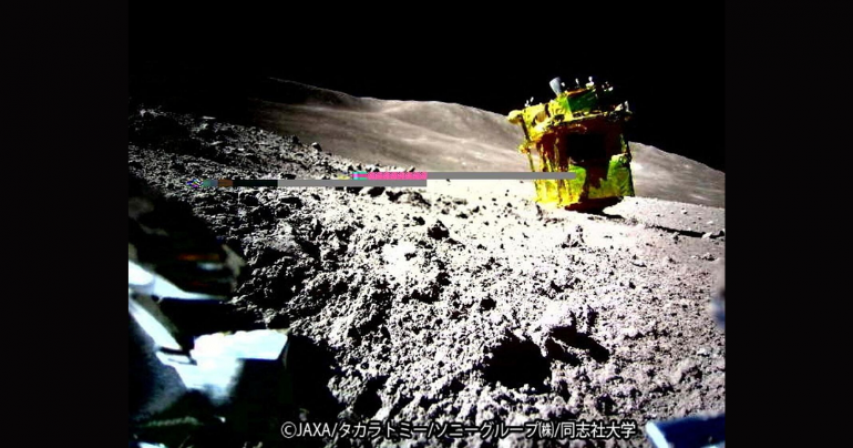Japan praises 'pinpoint' moon landing by its SLIM probe

Japan's space agency, JAXA, celebrated the successful moon landing of its SLIM probe, which achieved an impressively precise touchdown within 100 meters of its target. The Smart Lander for Investigating Moon (SLIM) aims to revitalize Japan's space program and contribute to lunar exploration efforts. The mission demonstrated "pinpoint" landing capabilities, showcasing the potential for future missions to explore uncharted lunar territories. Despite a minor engine issue leading to a slight deviation from the intended landing site, SLIM's achievement is significant in advancing space exploration technology.
The Japan Aerospace Exploration Agency (JAXA) received data about SLIM's touchdown, indicating that it successfully navigated to its target location. The project manager for the lander, Shinichiro Sakai, emphasized the importance of proving that lunar landings can be precise and flexible, inspiring future missions to explore new areas on the moon. SLIM's use of "vision-based" navigation is highlighted as a promising tool for future lunar exploration, especially in challenging terrains like the moon's poles.
During the final phase of the touchdown, one of the lander's engines likely experienced an issue, causing SLIM to drift 55 meters away from the intended landing site. However, if not for the engine trouble, the lander could have landed as close as 3 to 4 meters from the target. The touchdown, with an error of less than 100 meters, surpasses the conventional accuracy figures for lunar landers, showcasing Japan's advancements in precision lunar exploration.
The SLIM probe, often referred to as the "moon sniper," deployed a wheeled rover during the landing, capturing an angled image on the gentle slope of a lunar crater. Unfortunately, the lander experienced a power outage, preventing high-resolution imaging by its multi-band spectral camera. The solar panels' inability to generate electricity due to the tumble resulted in low-resolution images. Despite these challenges, JAXA remains optimistic about SLIM's potential contributions to lunar research.
SLIM's success comes at a crucial time for Japan's space ambitions, as the country seeks to play a more significant role in space exploration. Collaborating with the United States, Japan aims to send an astronaut to the moon as part of NASA's Artemis program in the coming years. However, recent setbacks, including a launch failure of the H3 rocket, have delayed various space missions. Japan's space program faces competition but continues to demonstrate its commitment to advancing space technology and exploration.
As SLIM marks a successful lunar landing, Japan remains at the forefront of space innovation. With plans for future lunar missions and the goal of sending an astronaut to the moon, Japan's space agency continues to contribute to global efforts in unlocking the mysteries of the cosmos. The success of SLIM reinforces Japan's capabilities in precise lunar navigation, setting the stage for further advancements in space exploration.
In the coming months, the lunar landscape will witness more missions, including the launch of the IM-1 lander by US startup Intuitive Machines in mid-February. Despite challenges and setbacks, the momentum in lunar exploration remains strong, with countries and private entities actively participating in unlocking the secrets of Earth's celestial neighbor.
Japan's SLIM probe has not only achieved a remarkable moon landing but has also demonstrated the potential for innovative navigation technologies that could shape the future of lunar exploration. As space agencies and private companies continue to invest in lunar missions, the collaborative efforts of the global space community propel humanity closer to unraveling the mysteries of the moon and beyond.
For More Related Updates Please Visit Our Official Website
By- Sahiba Suri






Comments